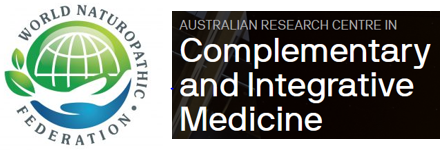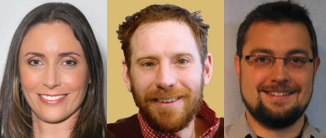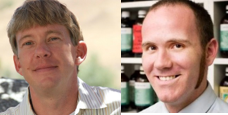Naturopaths’ global organizing engages two significant research initiatives
 Editor’s note: This analysis article is not edited and the authors are solely responsible for the content. The views and opinions expressed in this article are those of the authors and do not necessarily reflect the official policy or position of Integrative Practitioner.
Editor’s note: This analysis article is not edited and the authors are solely responsible for the content. The views and opinions expressed in this article are those of the authors and do not necessarily reflect the official policy or position of Integrative Practitioner.
Thirty years ago, the first female to serve as president of a national physician-level professional organization in the United States, Cathy Rogers, ND, organized a convention of 175 licensed members of her re-emerging field of naturopathic medicines. Rogers called the convention of North American practitioners “Return to the Memory.” Amidst a robust period of standard setting, she and her colleagues set the profession on a three-year process to define modern naturopathic practice.
A new generation of naturopathic leaders is steering a global coming of age for the field. Their work is aimed at more significantly grounding in data and expanding on that definitional process.
A recent issue of Elsevier’s Advances in Integrative Medicine (AIM) describes the emergence of new global research infrastructure. The publication comes with not unrelated news that an interlocking set of naturopathic researchers will guest edit a Special Focus Issue on Naturopathy at JACM: Paradigm, Practice and Policy Advancing Integrative Health (The Journal of Alternative and Complementary Medicine).
 The article in AIM was authored by a multi-continental writing team led by Australian naturopath Amie Steel, ND, PhD and including Canadian Kieran Cooley, ND and Joshua Goldenberg, ND, MPH from the United States. The authors position the presently 4-country entity as part of the profession’s recent “development of a stronger international coherence.” Their subject is the creation of the International Research Consortium of Naturopathic Academic Clinics (IRCNAC).
The article in AIM was authored by a multi-continental writing team led by Australian naturopath Amie Steel, ND, PhD and including Canadian Kieran Cooley, ND and Joshua Goldenberg, ND, MPH from the United States. The authors position the presently 4-country entity as part of the profession’s recent “development of a stronger international coherence.” Their subject is the creation of the International Research Consortium of Naturopathic Academic Clinics (IRCNAC).
The initial 8 consortium members are evenly divided between the northern and southern hemispheres: two academic centers each from Australia and New Zealand, 3 from the United States, and one from Canada. Their goals are to advance international research, support collaborative relationships and enable efficient multi-center research projects. Together, these founding members provide a rich pool for research with over 113,000 annual patient visits. The potential to power-up research is significant, and not just for their field but generally as examples of integrative outcomes.
The authors note that one element of the new context from which the initiative was birthed is the development of the World Naturopathic Federation (WNF). One role of the WNF – which presently has 23 member nations -- is to represent the profession at the WHO and to other global health organizations. To better serve this purpose, WNF has led a series of research projects to clarify the profession’s global norms. While marked by great dissimilarities in educational requirements, the survey effort found substantial unity on naturopathic principles.
An additional driver of development is the Australian Research Centre on Complementary and Integrative Medicine (ARCCIM). ARRCIM established the “International Naturopathy Research Leadership and Capacity Building Program” with which Steel, Cooley and Goldenberg are also involved.
 Steel, an associate editor of JACM, is a common denominator in driving the two research projects. She initiated a dialogue with JACM - for which I serve as editor in chief – about the possibility of seeking to draw the best research from the naturopathic community into a special JACM issue. To share the guest-editor role, Steel brought in Ryan Bradley, ND, MPH, the director of the Helfgott Research Institute at National University of National Medicine, and ARCCIM principal Jon Wardle, ND, PhD. The indefatigable Wardle is also AIM editor-in -chief and serves as WNF’s general secretary.
Steel, an associate editor of JACM, is a common denominator in driving the two research projects. She initiated a dialogue with JACM - for which I serve as editor in chief – about the possibility of seeking to draw the best research from the naturopathic community into a special JACM issue. To share the guest-editor role, Steel brought in Ryan Bradley, ND, MPH, the director of the Helfgott Research Institute at National University of National Medicine, and ARCCIM principal Jon Wardle, ND, PhD. The indefatigable Wardle is also AIM editor-in -chief and serves as WNF’s general secretary.
The invitation to contribute to the JACM Special Issue directly speaks to the profession’s global resurgence: “The medical discipline of naturopathy is in a period of renewal.“ The flier notes that in North America, the modern profession - known as “naturopathic medicine” – has played an important role in the inception of both functional and integrative medicine fields. In India, naturopathy is officially a part of the resurgent collection of traditional disciplines referred to as “AYUSH”. Manuscripts can be submitted through June 30, 2018.
At an August 2011 naturopathic research conference led by former NIH National Center for Complementary and Integrative Health adviser Carlo Calabrese, ND, MPH – a colleague of Rogers in the naturopathic profession’s institution building 30 years ago – RAND researcher Ian Coulter, PhD made a famous remark about the field. To him, the relatively large impact of the small profession meant the naturopathic doctors were “fighting above [their] weight class." These oversized contributions may be a function of naturopathic medicine’s tough academic standard of 4-year, post-premedical education –the most demanding of any integrative medicine instruction.
The new International Research Consortium of Naturopathic Academic Clinics (IRNAC) announced by Steel, Cooley and Goldenberg creates the potential for an ambitious and demanding standard of self-examination that can be meaningful for all of integrative health. Rather than the self-discovery of returning to the memory in the definition process of 1987-1989, the naturopaths will be turning to the data to engage continuous quality improvement.
If this new naturopathic academic consortium can find resources to power up the potential for learning from these 113,000 yearly patient visits, the naturopaths’ pattern of major contributions to the advance of integrative health and medicine has a chance to continue for another generation.




















SHARE